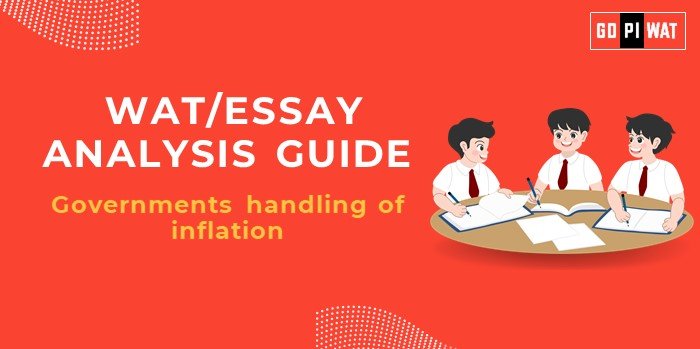📊 Government’s Handling of Inflation
Inflation management is a critical priority as unchecked inflation erodes purchasing power and hampers economic stability. Effective management of inflation helps stabilize essential commodity prices, benefiting both consumers and businesses and supporting overall economic growth.
📝 Effective Planning and Writing
- ⏳ Time Allocation:
- Planning: 5 minutes
- Writing: 20 minutes
- Review: 5 minutes
- 📖 Preparation Tips:
- Gather the latest data on inflation trends, recent repo rate adjustments, and government measures to combat inflation.
💡 Introduction Techniques for Essays
- 🎭 Contrast Approach: “Despite multiple government measures to control inflation, recent statistics reveal an upward trend, underscoring the complex nature of inflation control in India.”
- 📅 Timeline Approach: “From inflation targeting in 2016 to the recent interest rate hikes, India’s inflation control measures show a mix of achievements and ongoing challenges.”
🔍 Structuring the Essay Body
🏆 Achievements:
- 📈 RBI’s inflation targeting framework, which maintains inflation within a 2-6% range.
- 🛍️ Subsidies on essential items to ease the burden on consumers.
- 📦 Use of emergency reserves for commodity price stabilization during crises.
⚠️ Challenges with Comparative Analysis:
- 🛢️ Volatility in food and oil prices, heavily influenced by global markets.
- 🌾 Structural agricultural challenges, including low productivity and supply chain inefficiencies.
- 🌍 Import dependency, particularly for crude oil and certain food items.
🚀 Future Outlook:
- 🌾 Increase agricultural productivity through better technology and practices.
- 🌱 Invest in renewable energy to reduce dependency on imported oil.
- 🚚 Enhance supply chain mechanisms to stabilize prices and reduce wastage.
📑 Concluding Effectively
- ⚖️ Balanced Conclusion: “While government efforts to manage inflation have shown progress, sustainable control requires addressing structural economic issues, particularly in agriculture and energy.”
- 🌎 Global Comparison Conclusion: “India’s inflation control strategies reflect broader global trends. Lessons from other nations may guide India’s path toward sustainable inflation management.”
📊 Analyzing Successes and Shortcomings
✅ Key Achievements:
- 📈 Effective inflation targeting by the RBI.
- 🛍️ Subsidies for essential commodities to mitigate price shocks.
- 💳 Moderate success in using interest rates to control inflation.
❌ Ongoing Challenges:
- 🛢️ High dependency on imports for oil, making inflation vulnerable to global market fluctuations.
- 🌾 Climate-related volatility affecting food prices.
- 💸 High fiscal costs arising from extensive subsidies.
🌏 Global Context:
India’s inflation management strategies are comparable to emerging economies but face unique challenges due to its heavy reliance on agricultural and oil imports.
🌟 Recommendations for Sustainable Progress
- 🌾 Increase Agricultural Productivity: Stabilize food prices with advanced farming techniques and better infrastructure.
- 🌱 Invest in Renewable Energy: Mitigate the impact of oil price volatility by diversifying energy sources.
- 💡 Implement Targeted Subsidies: Reduce fiscal burdens while ensuring benefits reach those in need.
✍️ Sample Short Essays on Government’s Handling of Inflation
- ⚖️ Balanced Perspective: “While the government’s inflation control measures have yielded mixed results, addressing underlying structural challenges is essential for sustained success.”
- 🔧 Solution-Oriented Approach: “To effectively curb inflation, India must focus on agricultural improvements and invest in renewable energy sources to mitigate import-related price risks.”
- 🌏 Global Comparison: “India’s inflation control measures are similar to other emerging economies, yet unique challenges like food price volatility require targeted domestic solutions.”


